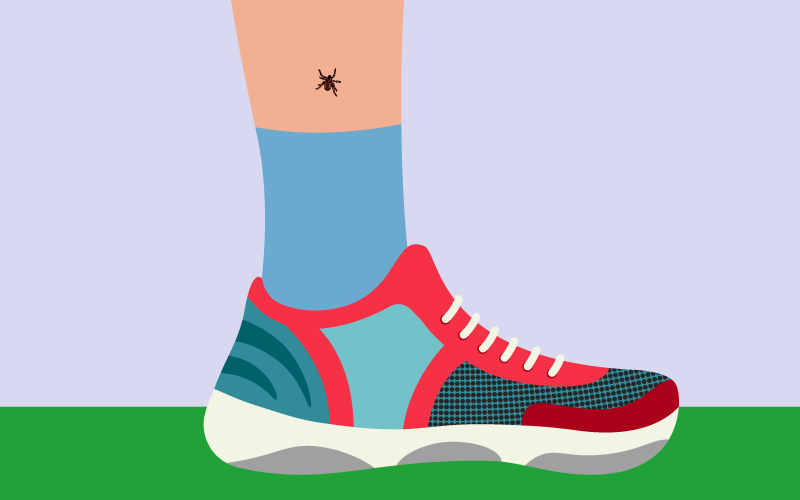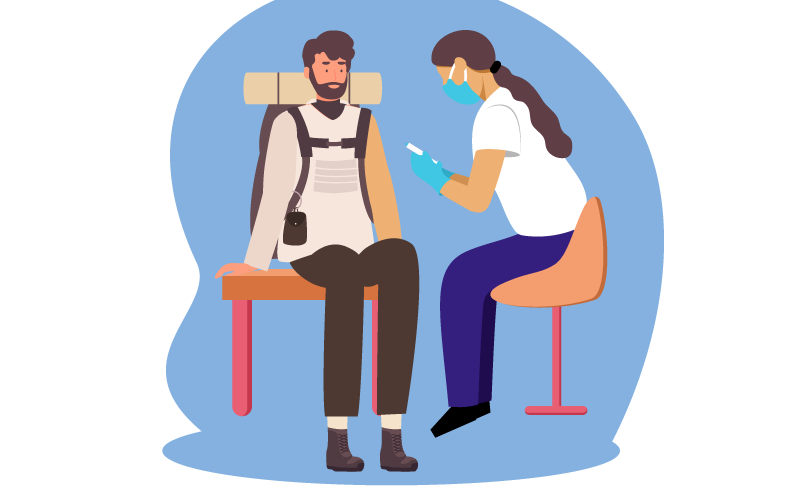Tick-borne encephalitis (TBE)
What is TBE?
Tick-borne encephalitis (TBE) is a human viral infectious disease involving the central nervous system and occurring in many parts of Europe and Asia. The virus is transmitted by the bite of infected ticks, often found in woodland habitats. The EU/EEA reports an average of over 3000 cases of TBE each year.

What are the symptoms of TBE?
TBE is most often manifested as a two-phased illness. The first phase is associated with symptoms such as:
- fever
- fatigue
- headache
- muscular ache
- nausea.
The second phase involves the neurological system with symptoms of meningitis (inflammation of the membrane that surrounds the brain and spinal cord) and/or encephalitis (inflammation of the brain).
What are the complications of TBE?
TBE can cause inflammation of the brain (encephalitis) and the membranes surrounding the brain and spinal cord (meningitis). This can result in various neurological complications such as:
- difficulties with memory, concentration, and overall cognitive function
- muscle weakness, tremors, impaired coordination, and involuntary movements
- numbness and tingling sensations.
In some cases, individuals who have had TBE may continue to experience persistent symptoms and long-term effects. These may include
- chronic fatigue
- lingering cognitive difficulties
- motor function impairment
- other neurological symptoms.

How is TBE spread?
TBE is primarily spread through the bite of infected ticks which carry the TBE virus. The virus can be carried by different species of ticks. Ticks become infected with the TBE virus when they feed on infected animals. Once infected, the tick can transmit the virus to humans after it has attached itself to the skin. The virus is transmitted very quickly, so ticks should be removed as soon as possible with tweezers.
These ticks are commonly found in wooded or grassy areas where they can come into contact with people. It is important to note that TBE cannot be directly transmitted from person to person.
Who is at risk of TBE?
In areas where TBE is common, people with recreational or occupational outdoor activities such as hunting, fishing, camping, collecting mushrooms and berries, forestry, orienteering, and farming are potentially at risk of infection by contact with infected ticks.
There is evidence that people who consume unpasteurised dairy products may also be at risk of TBE, as cases have been seen in people who have consumed raw milk from goats that live in areas where the TBE virus is present.

How can TBE be prevented?
Vaccination is one of the most effective means of preventing TBE.
In addition, the risk of being infected by the TBE virus can be reduced by avoiding tick bites in different ways:
- using tick repellents.
- wearing clothing with long sleeves and long trousers
- inspecting the body for ticks after outdoor activities and removing ticks with tweezers as soon as possible
How is TBE treated?
There is no specific way to treat TBE. Treatment relies on supportive management. If a person develops meningitis, encephalitis, or meningomyelitis they will require hospitalisation and supportive care e.g. support for breathing, staying hydrated, or reducing swelling in the brain.
Note: The information contained in this factsheet is intended for the purpose of general information and should not be used as a substitute for the individual expertise and judgement of a healthcare professional.
